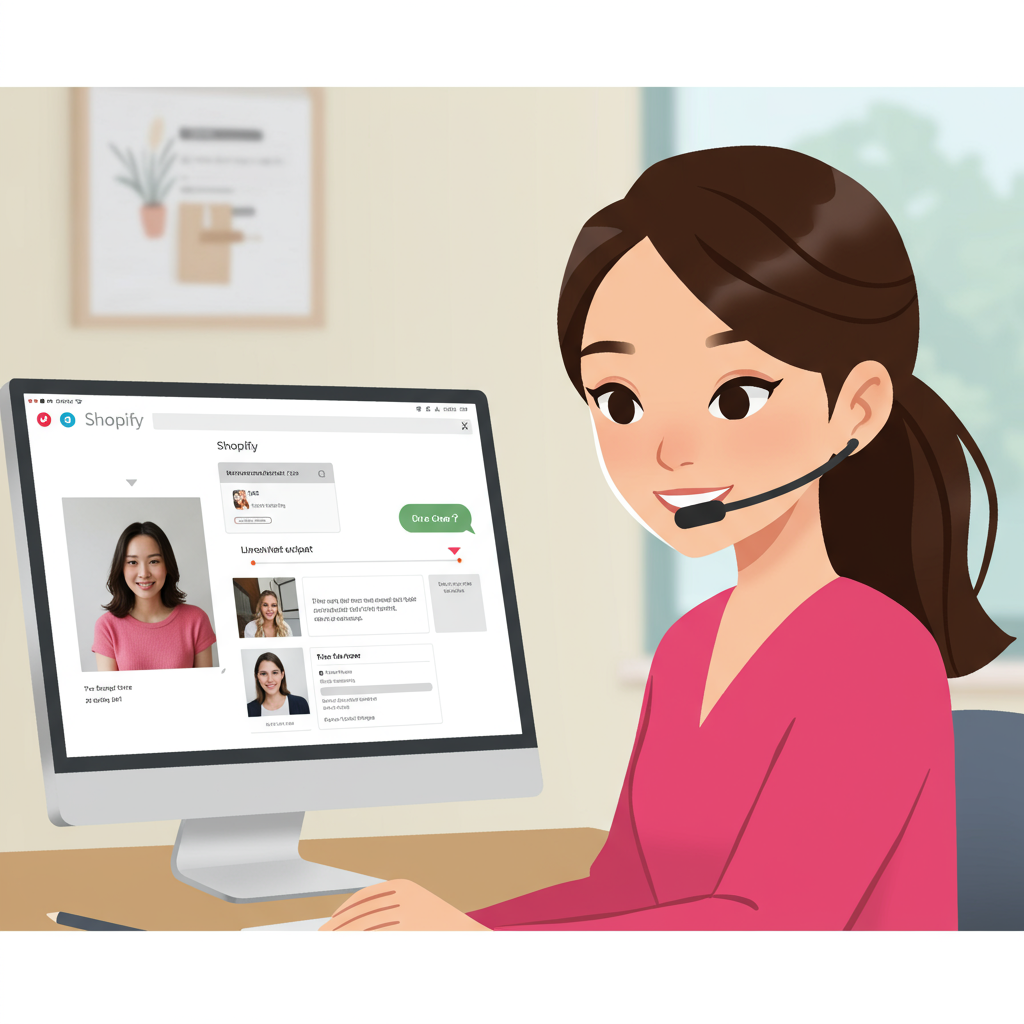Elevate your customer service and boost sales by implementing these proven strategies for live chat on your Shopify store.
As a Shopify merchant, I’ve come to realize that customer service isn’t just a department; it’s the heartbeat of my business. In today’s fast-paced digital world, customers expect instant gratification, and that’s where live chat support truly shines.
I’ve seen firsthand how effective chat support can transform a browsing visitor into a loyal customer. It’s more than just answering questions; it’s about building relationships, instilling confidence, and resolving issues in real-time.
For me, integrating chat support into my Shopify store was a game-changer. It provided an immediate, low-friction channel for customers to connect, far more convenient than email and less intrusive than a phone call.
But simply having a chat widget isn’t enough. To truly leverage its power, I’ve had to develop and refine a set of best practices that ensure every interaction is positive and productive.
My first and most crucial best practice is **availability and clear expectations**. I make sure my chat hours are prominently displayed. If I’m not available 24/7, I let customers know when they can expect a response or offer an alternative contact method.
There’s nothing more frustrating for a customer than seeing a ‘chat now’ button only to find no one is there, or to wait endlessly for a reply. I strive to be online during peak shopping hours and use automated messages to manage expectations when I’m away.
Secondly, **speed is paramount**. Customers using chat expect quick responses. My goal is to reply within seconds, not minutes. If I can’t provide an immediate answer, I acknowledge their message and let them know I’m looking into it.
A rapid initial response significantly reduces customer abandonment and shows that I value their time. It sets a positive tone for the entire interaction.
My third best practice revolves around **personalization and empathy**. I always address customers by their name if I have it, and I use a friendly, conversational tone. I try to put myself in their shoes and understand their frustration or need.
Using canned responses is efficient, but I always customize them to fit the specific query. It makes the customer feel heard and not just like another ticket in a queue. A little empathy goes a long way in de-escalating issues.
Fourth, **knowledge is power**. I ensure that I, or anyone on my team handling chat, has a deep understanding of our products, shipping policies, return procedures, and common FAQs. There’s nothing worse than a support agent who doesn’t know the answers.
I keep a readily accessible knowledge base or internal cheat sheet for quick reference. This allows me to provide accurate and consistent information every time.
My fifth strategy is **proactive engagement**. Instead of waiting for customers to initiate a chat, I sometimes use triggers to offer help. For example, if a customer spends a long time on a product page or is stuck in the checkout process, a subtle pop-up offering assistance can be incredibly effective.
This proactive approach can prevent cart abandonment and answer questions before they even become obstacles.
Sixth, I focus on **clear and concise problem-solving**. When a customer has an issue, I break down the solution into simple, actionable steps. I avoid jargon and ensure my instructions are easy to follow.
If it’s a complex issue, I might offer to send an email with detailed instructions or even suggest a phone call if chat isn’t the best medium for resolution.
Seventh, **maintain a professional yet friendly tone**. My language is always positive and polite. Even when dealing with a frustrated customer, I remain calm and composed. I avoid using all caps or excessive exclamation points.
I believe that a calm and reassuring tone can often diffuse tension and lead to a more productive conversation.
Eighth, **handling difficult customers with grace**. This is inevitable in any customer service role. My approach is to listen actively, validate their feelings, and focus on finding a solution rather than arguing.
If a customer becomes abusive, I have a clear policy for ending the chat, but I always try to de-escalate first by offering a path to resolution.
Ninth, I leverage **chat tools and integrations**. Shopify’s app store offers various chat solutions that integrate seamlessly. I use features like canned responses for common questions, customer history lookup, and even order tracking directly within the chat interface.
These tools save me time and allow me to provide more efficient and personalized support.
Tenth, **follow-up and feedback**. After a chat, I often send a quick follow-up email to ensure their issue was resolved to their satisfaction. I also use post-chat surveys to gather feedback on my performance.
This feedback is invaluable for identifying areas for improvement and ensuring I’m consistently meeting customer expectations.
Finally, I regularly **analyze chat transcripts**. This helps me identify common pain points, frequently asked questions, and areas where my product descriptions or website navigation might be unclear.
It’s a continuous learning process that allows me to refine my support strategies and even improve my overall business operations.
Implementing these best practices has not only improved my customer satisfaction scores but has also directly contributed to increased sales and repeat business. Chat support isn’t just a cost center; it’s a powerful revenue driver.
What do you think about these best practices? Have you found similar strategies effective in your own Shopify store?
By prioritizing quick, personalized, and knowledgeable chat support, I’ve built stronger relationships with my customers and fostered a sense of trust that keeps them coming back. It’s an investment that truly pays off.






